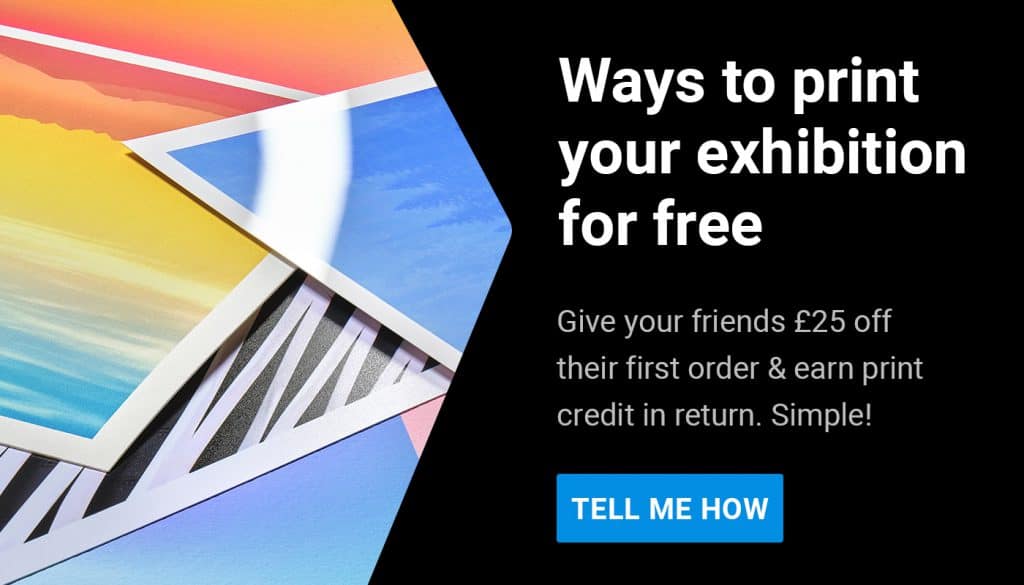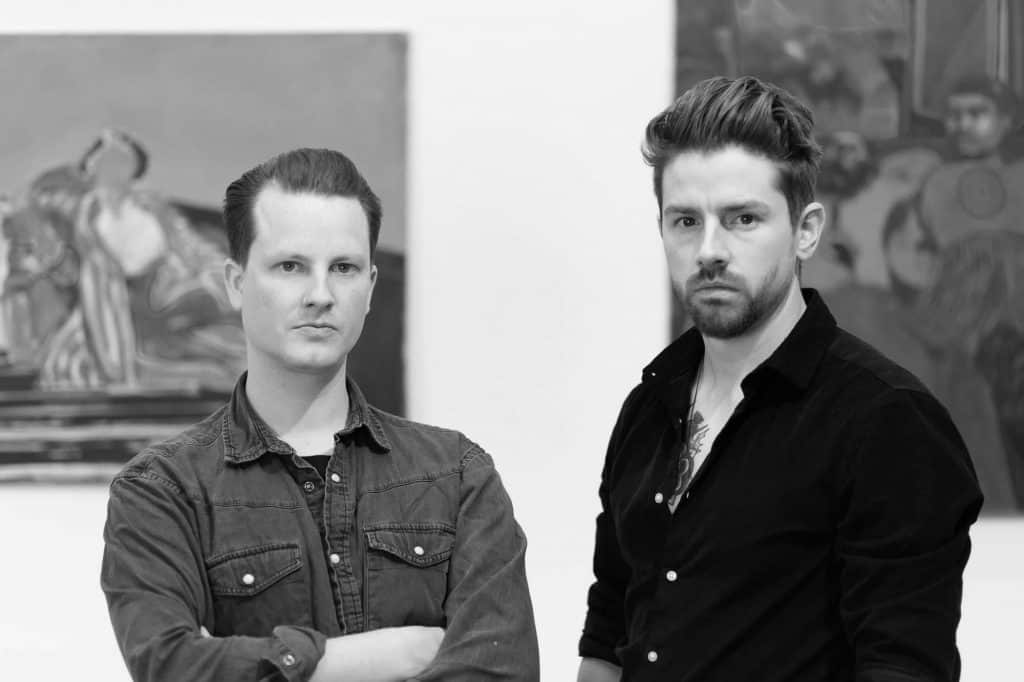
Delphian Gallery is an artist-run gallery and arts platform launched in 2017 by Benjamin Murphy and Nick JS Thompson. Over the past few years they have become tastemakers for up and coming artists.
Delphian also produces the Delphian Podcast, Delphian Magazine, and hosts free talks and panel discussions for early-career artists.
How do you accept submissions to the gallery?
Nick: We actually don’t accept email submissions because we simply get too many. However, we do accept submissions to feature on our Instagram page. It’s the same way that we run our open call, you can tag a post with #DelphianOpenCall and we check the feed constantly, and then pick up work that we like to repost and artists to work with in the future.
Ben: Not all galleries accept submissions, but every gallery that does has very specific guidelines on how to submit and they should be followed to the absolute letter. They are there for a reason, but also to make the artist’s job of submitting easier. Blanket emailing high res images to any gallery that you can find the contact details of benefits no one. They are easy to spot, often with no idea of what we do as a gallery, they don’t know how to spell our names, they are just emailing out every gallery they can find in a really impersonal way hoping that someone will respond. It’s a waste of everyone’s time
Should artists be able to write about and contextualise their own work?
Ben: It depends, I think. For some artists, the content is very direct and didactic and their work means what it means. They are trying to convey an idea or a message, other artists create work practically and subconsciously and then they allow their work to be as open to interpretation as possible, so they don’t like to talk about the content of their work, because the content of their work is different for everyone who looks at it. It depends on the artist’s intention as to whether they have to contextualise it. I think it’s just important to understand what you are doing and why you’re doing it. We have spoken to artists in the past who were speaking about their work only as if they are reading a press release, and it’s very art-world-speaky and quite insincere. It is very clear when that is the case. As long as an artist can talk about their work in a considered way that isn’t just like they are reading a press release, I think that’s important.
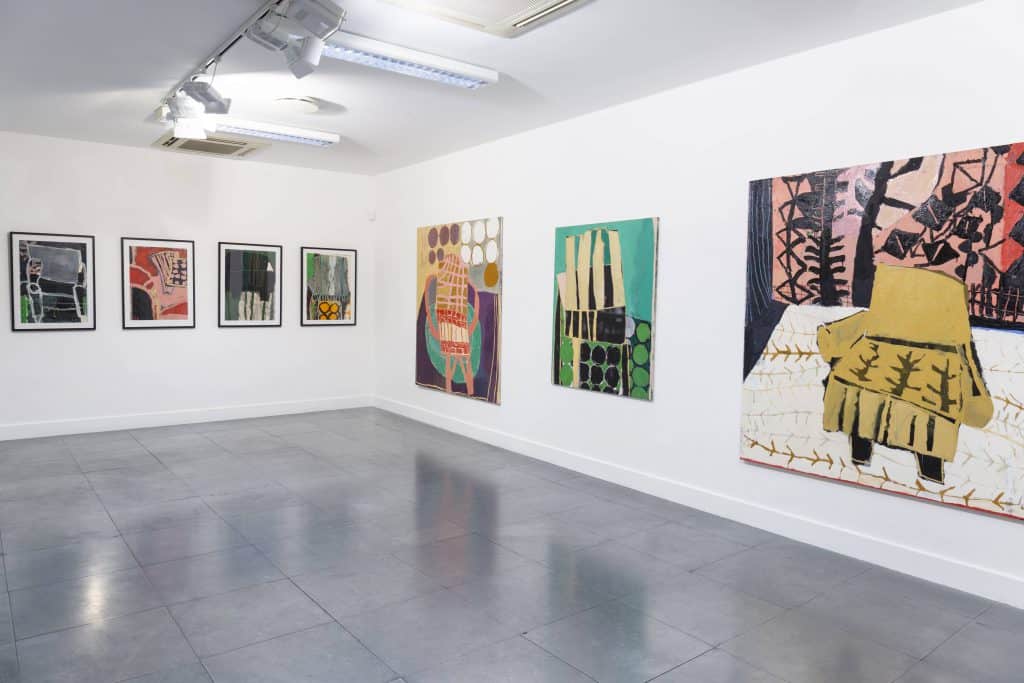
Is it important to have a theme for an exhibition?
Nick: I think it is. I think it should have some sort of context but then a lot of shows don’t. On the promotion side of things that will start getting press around the show, it is a lot easier if there is something that’s newsworthy, and that people will want to write about. It helps get people excited by it.
Ben: Yeah, every show does have a theme, whether or not it is explicitly stated. It might just be that these are works by such and such. But the more direct the theme is, the easier it is to get people excited about the show, but also, it can put people off. Say if the show is political, that might alienate some of the artist’s followers.
Nick: But then if the show is political and it puts people off it probably doesn’t matter because they are not the people you are trying to connect with.
Ben: I suppose what I’m saying is that having a theme that is explicitly stated or is easy to see in the show, is an easier way to get people engaged and excited about the show. Rather than just being “this is a collection of paintings”. But it can also be a bit of a barrier potentially.
Do you think an artist’s progression is charted consciously throughout their career or is that retrofitted?
Ben: Often these kind of things are and probably should be identified in retrospect, but I think every solo show an artist does defines the period of their career between that one and the previous one. There are a lot of artists who do a solo show and then they’ll do one a few years later that’s exactly the same, and there is no progression in their work or what they are doing and that can be very apparent. But for the most part, naturally if you do a solo show a year or two after the previous one your work is going to have progressed to another place.
So I think shows should, and must, progress to another kind of place than the previous one did. As an example, Picasso’s blue period, I don’t think he went “Well, I’m just going to paint in blue now for a while” and then did so. No, I think that was just the vibe he was at, at the time. And afterwards people went “Alright, that was his blue period”. It happens naturally.
What’s the process that you go through working with an artist to put a show together?
Nick: For us it’s a constant dialogue with the artist(s). With a solo show, or two persons or something like that, we’ll get updates on the work as and when it’s being produced, to see how it’s coming along. When it comes to the time of choosing the works, firstly it would be an aesthetic decision on which ones sit nicely together.
Ben: If we do a solo show with an artist we view it as a collaboration between us and them. So we probably have a little bit more input in what goes in the show and what doesn’t than some galleries. Some galleries will just say “Right, we’ll give you a show this date” and then they can just do whatever work they want. We, from the beginning, are often quite clear about what we want for the show. So we’ll say we want work on canvas or we want your portraits rather than your landscapes or something because we approach curation as if it’s like an artistic practice in itself. So rather than just hanging a series of paintings all by one person, we want to have more of an involvement in how the space looks and what works go on the show and curate the show as if it’s one coherent artwork, rather than just a display of separate pieces.
Nick: Yeah, we also aim to bring an immersive element to our shows, such as printing large scale prints and hang works on top of them and lots of other methods to mix things up.
Ben: We try to put our mark on it, I suppose.
Can you give me some examples of that?
Ben: A few years ago we organised a group show at theprintspace Gallery with quite a few artists, I think it was around 20. We contacted the artists saying ‘we want you in this show, but you will basically have no control over how your work looks, we will be very experimental in how we hang it.’ We hung works on top of other works, we paired works together, we blew things up really big, and then filled the wall with them. So the artworks didn’t exist as individual pieces as the artist created them, we used those works as the raw material to make one immersive artwork, if that makes sense.
But then we also had a solo show with Rhiannon Salisbury this summer, and a lot of it was inspired by ‘The Yellow Wallpaper’ by Charlotte Perkins Gilman, so we bought a hundred copies of that and then they were given out to people at the show.
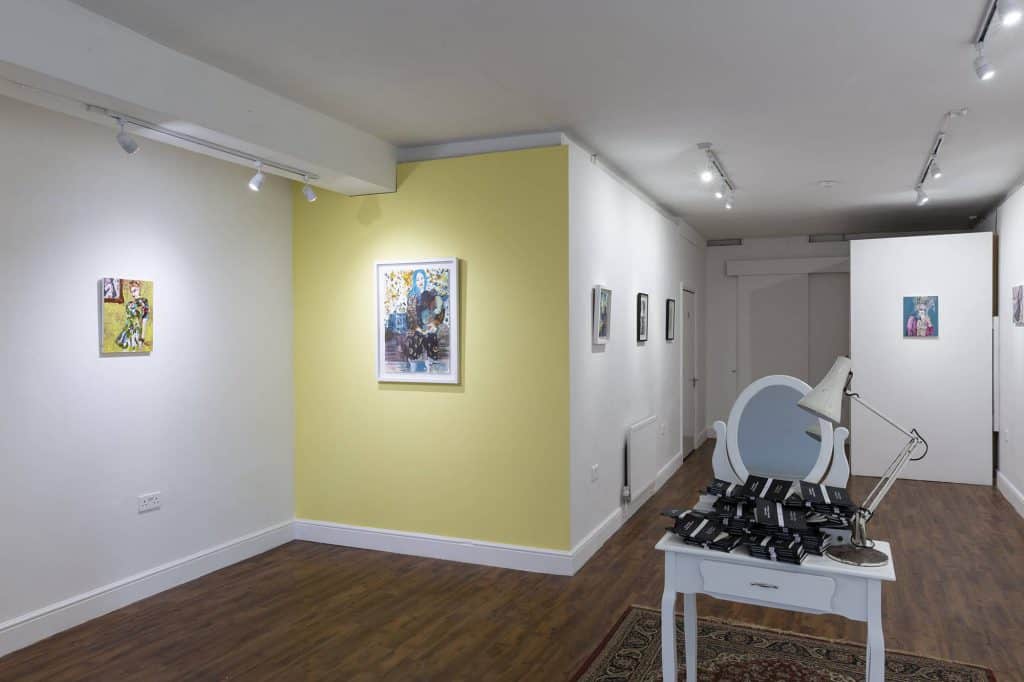
How do you resolve creative disagreements between yourselves and the exhibiting artist?
Nick: It hasn’t ever got to a real sticking point. There has been some discussion on work we were thinking of leaving out and then…well it’s usually if it’s recent works, so the artist has more attachment to it as they just finished it and they say ‘I really want this in the show, because it’s brand new, I really love it’. But we’ve a bit more of a detached viewpoint on it, which makes it easier to choose works based on other values rather than just because it’s a new piece and they really love it.
Ben: Yeah, we have more involvement in that kind of thing than some galleries. We are very clear from the beginning that that’s gonna be the case and we often ask artists to make work and then we select the show from the works that they’ve made. So say Riannon, she made probably twice as many as we needed and then we went round to her studio a few times and in collaboration with her and in discussion, we selected the show from the pool of works that she’d made for the show.
Nick: Yes and there was an ongoing dialogue as well where she had this bulk of work that she had made and we would say ‘we like this, the direction of where this is going.’ We would say ‘So maybe this group won’t fit so well with the rest of what we have got so far. So probably concentrate on this side more than on that side’… and it would gradually transform.
Ben: Luckily most artists, or actually all artists we have worked with have been very happy with that way of working. I think it’s because we are an artist run gallery. That’s part of the reason why we want this involvement and also part of the reason why I think artists are ok with giving us that little bit of control some galleries wouldn’t have.
What advice can you give for those who are not at the stage of working with a gallery or curator, but are looking to have their first show?
Nick: I think it’s important to have that second opinion. Second, third and maybe even fourth opinion. If they don’t have access to a curator for critique then they can call on a peer group or other artists whose opinions they respect and think that they will have valid and constructive criticism on their work and how it should be displayed.
Ben: And it should be someone who isn’t afraid to tell you if something isn’t working. So I work in a similar way we ask our artists to work in that I make more work for the show then I need and then I select the best ones. So I’ll send all the images to a few people and ask them which ones aren’t working and which ones are. It’s definitely very important for everyone I think, every creative person, to get a second or third or fourth opinion. It’s important to receive criticism but it doesn’t mean you have to take all of it on board and action all of it. Some of it you might disagree with, it’s your work so you have the final decision. But it’s important to seek out as much of that as possible.
Nick: And those critiques that come back can often open up other ideas and directions for your work which can be very useful.
What can artists aim to achieve from having their first exhibition?
Nick: I think the end goal should be to get as much promotion, publicity, and visibility out of it as possible. You may not get massive sales on your first show, (or any!) You’re not going to have a massive collector base – people may not know about your work so it should be seen as a way of increasing your visibility as much as possible and getting your name out there. Getting the private view as busy as possible, getting people to talk about it is an important thing.
Ben: Chasing sales is a really insincere reason to be doing exhibitions and it really translates – it’s very readable in a show. The benefit of doing a show is not sales – sales are an added bonus. The goal should be the realisation of a project that couldn’t really exist in another form. Having all of these works together and making this event is the goal. So yeah, visibility is the main outcome of the show. This is what the artist should be looking for.
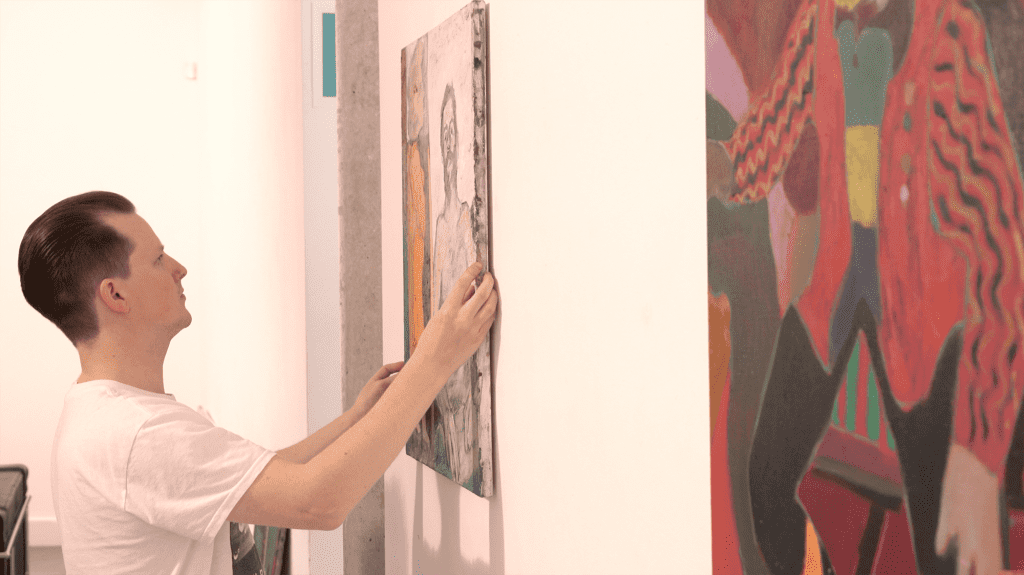
How do they go about creating that visibility for the show?
Nick: There are three things they should have finished before they start contacting people: a press release, images of the artworks and an invite. Those things should be ready. The press release should include all the relevant times and dates and stuff like that as well as a ‘who, what, why’ section so that people know the details, and why it’s newsworthy. So yeah, press releases are useful but again, it’s really important to research who you are contacting first to make sure the work you are sending them is gonna fit. There is no point in sending details about a street art print show to a magazine about sculpture but a lot of people will do that. You need to be considered in who you reach out to. Along with a press release it’s also important to use every resource that is available to you; social media, press release, printed material if the budget allows it, flyers and posters etc.
How about promotion via other methods such as blogs, magazines or other artists?
Ben: Blogs, magazines, writers probably all get hundreds of press releases into their inbox every week. So if you do something that stands out a little bit, something that is a bit unusual and memorable and eye-catching then they’re gonna remember it whether they like it or not. So, we occasionally do printed mailouts that we send to the press and they were very nicely presented in a black envelope with a black wax seal. When you receive that through your letterbox, it stands out from generic emails. Things like that, that go against the grain, will definitely get noticed.
Nick: I think quotes from other artists, critics, or those you admire are always nice to include in press releases, that writers can easily lift out and quote in an article.
Ben: I used a quote from Grayson Perry on my website which was ‘Yeah, looks alright’. He was actually a lot more favourable of my work but I thought that’s quite funny and is gonna get noticed rather than him saying something nicer I suppose.
Another example was Banksy, with one of his books he asked the Metropolitan Police for a quote for the cover of his book and they said: ‘There is absolutely no chance you are getting a quote from us for the cover of your book’ and then that is the quote he used for his book. Brilliant.
3 pieces of advice for somebody with the aspiration of doing a show at some point?
Ben: The first one: start thinking of yourself as a business as early as possible. So do everything that running a small business entails. So get good at things like marketing, branding, social media and admin. Get good at admin because nobody is going to do it for you.
Nick: Make yourself as visible as possible, so make sure you get feeds on all the social media platforms and you’re active in all of them. Make sure your work is out there in public.
Ben: Yeah some artists are quite reluctant to embrace things like social media because they have this romantic ideal of an artist working away in the studio and then they are discovered and become known all of a sudden. But that’s not going to happen. They say ‘Oh I’m not good at social media’ and they neglect it, and the only person they are disadvantaging is themselves.
Ben: Be nice, work hard and be easy to work with, that’s the final one!
Nick: Answer emails quickly, be around, be responsive, be professional. Because word travels – if you are not, it will definitely disadvantage you.
